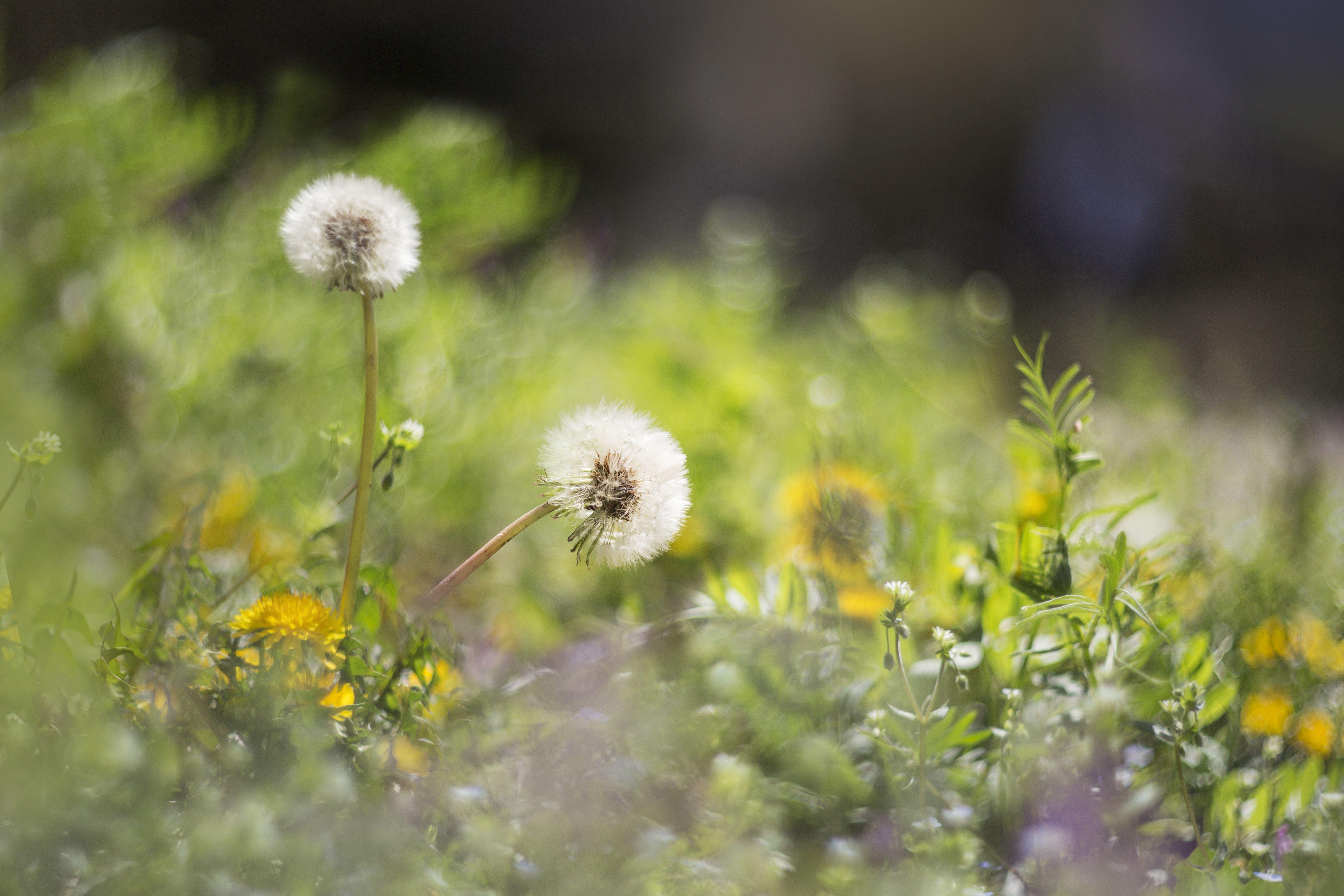In autumn, cooler temperatures and more regular rainfall do wonders to revive a tired summer lawn. At the same time, these favorable conditions spur a new flush of weed growth. Some weeds, like henbit and dandelion, quietly germinate in the fall and overwinter as tiny seedlings that will become robust lawn weeds in spring. Other weeds, like clover and ground ivy, grow and spread rapidly in autumn's cool conditions.
Here are the most common lawn weeds that pop up in fall and how to minimize their impact on your grass.
Marty Baldwin
1. Common Chickweed
An annual broadleaf weed, common chickweed germinates from seed in late summer or early fall. Its small oval leaves cling to stems that hug the ground, forming a dense mat of foliage that can evade mower blades. While fall growth is limited, the plant grows with gusto in spring when chickweed produces its tiny, white daisy-like flowers.
Control tactics: A healthy, thriving lawn can outcompete chickweed. This low-growing weed thrives in compacted, moist soil. Lawn grass, on the other hand, grows best in loose, well-drained soil. The presence of chickweed might indicate a need to improve soil conditions.
Aerate the lawn to improve drainage. Also, top-dress with a thin layer of compost to further improve the soil profile. Control an aggressive infestation with a preemergent herbicide applied in late summer before chickweed seeds germinate. Alternatively, wait until it has germinated and use a post-emergent herbicide in fall, around late October or early November. Follow up with a second application of herbicide in spring if needed.
Peter Krumhardt
2. Dandelion
This perennial weed is one of the easiest to identify in spring. Its bright yellow flowers greet the growing season and soon disperse thousands of tiny seeds across the landscape. Dandelion seeds germinate when conditions are right later in the growing season. Early fall presents an ideal environment for young dandelions to take root. Aboveground growth is minimal in fall as plants produce just a few tiny leaves, but they are building reserves underground in their taproots to fuel rapid growth in spring.
Control tactics: Digging up the taproot of dandelion works to control it, but this is especially challenging to do in fall when the aboveground portions of the plant are tiny and hard to spot in the turf. The best defense against dandelions is a healthy lawn. Vigorously growing turf will choke out dandelion seedlings before they can take over. Adequate watering, regular mowing, and a fall fertilizer application will promote a healthy lawn. If you are dealing with a major infestation, applying a perennial broadleaf herbicide in fall will help get it under control.
Marty Baldwin
3. Shepherd’s Purse
A low-growing annual weed with leaves that resemble dandelion foliage, shepherd’s purse germinates in fall and then sends up a slender flower stalk in spring. The spindly, 18-inch-tall stalk has tiny white flowers. Shepherd’s purse is commonly found in patchy lawns that are struggling in poor soil.
Control tactics: To control shepherd's purse, improve the health and density of the lawn. If your soil is excessively sandy or slow-draining clay, consider a different type of turfgrass. Some grass cultivars are better suited to harsh growing conditions than others.
4. White Clover
In spring, this perennial plant produces fragrant white flowers that attract pollinators, which is why a clover lawn can be a desirable alternative to a manicured turf lawn. However, if you want to get rid of it, fall is the time to act when white clover takes root. It grows quickly in full sun, but it will spread to form colonies in shade too. It is commonly found in lawns with heavy, clay soil or light, sandy soil, both of which have few available nutrients.
Control tactics: A large stand of white clover usually indicates a lack of available soil nutrients. When fortified with adequate nutrients, especially nitrogen, a lawn can outcompete clover. To control clover, apply lawn fertilizer in fall. Broadleaf herbicides are effective, too, and fall is the best time to apply them.
Don’t use herbicides on or near fall-planted grass seed until the new turf has been mowed two or three times. Young seedlings are tender and susceptible to herbicide injury.
Miyuki Satake / Getty Images
5. Henbit
Germinating in fall, this annual weed has green-purple stems, hairy leaves, and small pink-purple flowers in spring. Its stems expand in spring to form mats of foliage, shading nearby grass as it grows. After flowering and producing seed in late spring, henbit dies, but its seedlings will emerge in fall to grow the population.
Control tactics: A dense, vigorous lawn is the best way to combat henbit. Mow the lawn at 3½ to 4 inches tall to promote strong growth. Apply fertilizer in fall to encourage density and aerate the lawn if needed to break up compacted soil.



